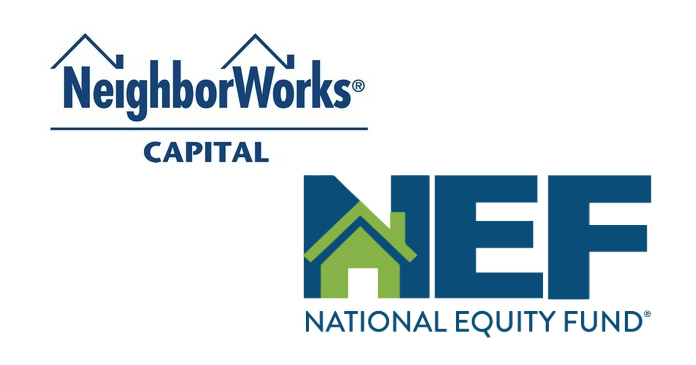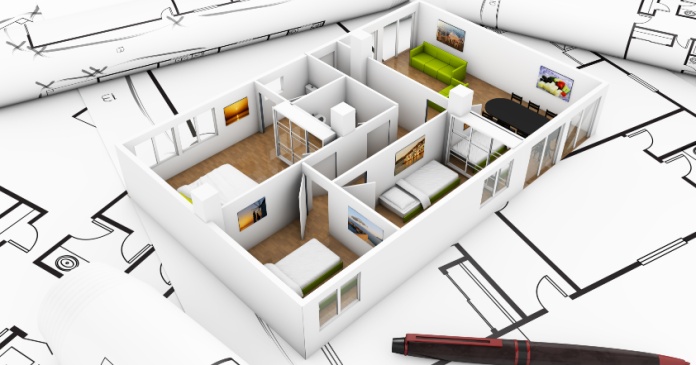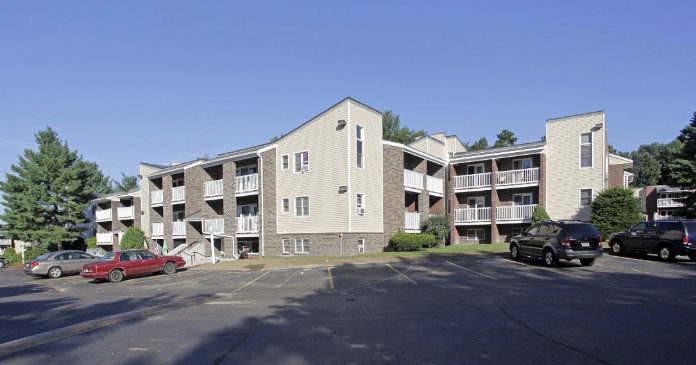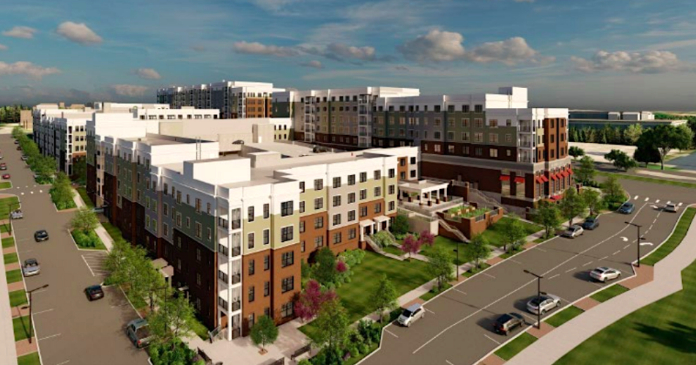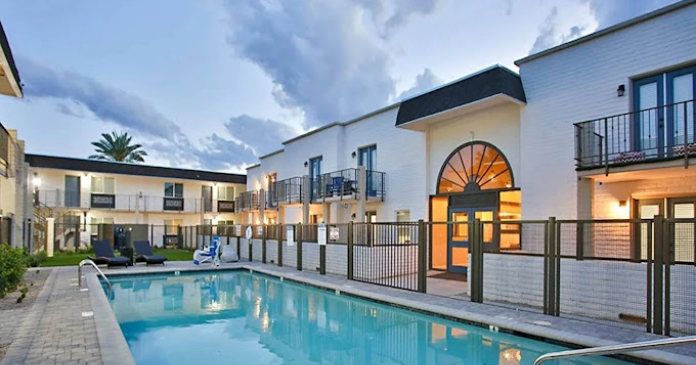Beyond the frightening amount of money the average renter pays the first of every month, the truly scary part of this situation is that the math actually adds up. This steady rent increase is the rational result of a series of economic trends that have made this moment unique in the history of American housing.
“We typically measure affordability as a share of households that are cost burdened,” says Jonathan Spader, a senior research associate at Harvard’s Joint Center for Housing Studies. “In 2014, 49.3 percent of households were spending at least 30 percent of their income on rent, near the all-time high. In addition, 26 percent of households spend at least half of their income on rent. What we’ve seen over the course of the last 15 years is a consistent, upward climb.”
According to Spader, the last decade has seen 9 million Americans become new renters, the largest 10-year gain in history, pushing the percentage of households that rent from 31 to 37 percent, the highest level since the Johnson administration. That’s all happening at the same time the country is losing roughly 125,000 affordable rental units a year. According to an analysis of the country’s 11 largest metro areas by the Furman Center at New York University, a typical renter can afford less than 40 percent of the available apartments in nine of those markets.
Nearly a decade ago when the housing bubble became a foreclosure crises, priorities were different. But despite the swing in the market, the 10-year period from 2005-2015 saw a steady growth in the rental population, says Spader. First, it rose due to the foreclosure crisis. Then, the influx of Millennials into the housing market and rising urban property values contributed to ever-tightening city housing markets.
In the midst of an election season where economic pressures and inequality have become rallying cries, animating the electorate and shaping the debate, housing, traditionally the biggest household expense, has been pretty much a non-issue at the federal level. To be fair, both the Clinton and Sanders campaigns have issued housing plans that would invest billions to construct new affordable housing and expand incentives and protect rental assistance (the Trump campaign hasn’t responded to requests for comment or specific policy outlines).
But housing policy hasn’t been much of a focus of any debate, and the issue seems destined to continue being a second-tier one, despite being a problem shared by nearly every city across the country.
While increasing the supply of affordable housing is often a local issue, federal money does provide needed housing support in the form of housing choice vouchers, public housing units, and project-based rental assistance or low-income housing assistance tax credits. Yet it often falls far short of the need, which has been growing rapidly.
According to the Furman Center, much of the growth of rental housing stock from 2006 to 2014 came from single-family homes, which often don’t meet the needs, or budgets of renters, all while the growth of the rental population is outpacing the growth of rental units in major cities.
“Budget cuts beginning in the 1980s, when we were funding the creation of 500,000 units a year, have resulted in a situation where federal programs produce perhaps 25 percent of that amount in new units in a good year,” says Stockton Williams, executive director of the Terwilliger Center for Housing at the Urban Land Institute.
“Only one in four households that is income-eligible for federal housing assistance receives any. The annual cost to taxpayers of the federal income tax deductions for home mortgage interest and property taxes, which mainly benefit relatively affluent households, is double what the government spends on all lower-income housing programs combined.”While there’s been an 18 percent increase in the number of low-income households from 2007 to 2013, funding for the largest HUD program remains below 2008 levels.
“Affordable housing is at the top of the list for mayors around the country, but hasn’t gotten that kind of attention at the federal level,” says Spader. “But city officials need federal partnership. They put forward plans, and critically need federal help for rental assistance.”
This crowded market seems destined to see runaway rent increases, far outpacing the slow, stagnant, and worrisome growth in wages. The distance between those two trend lines is becoming a chasm threatening affordability. Eric Fischer charted the median price of a two-bedroom apartment in San Francisco over 70 years, before and after rent control was enacted. The result was a 6.6 percent average annual increase in rent, 2.5 percent higher than inflation. Decades of this kind of divergence results in the disparities evident today.
Gina Ciganik, senior advisor for housing innovation at the Healthy Building Network, who has spent years building affordable housing in Minneapolis sees those different trajectories as a very real threat.
“People who want to be provocative ask, ‘is this a housing crisis or a wage and job crisis?’” she says. “What are we subsidizing with affordable housing—low wages? Jobs with minimum wage paychecks often aren’t enough to get you housing in urban areas across the country.”
Affordable housing and state-run housing conjure up unfair stigmas of failing, dangerous housing projects, or welfare for the poorest of the poor, when in fact, voucher programs are prevalent, and the affordability crisis affects a wide swath of the population, from those in poverty to many with professional degrees, including social workers, chefs and educators. At a recent hearing of the House Financial Services Subcommittee on Housing and Insurance, Richard C. Gentry, president and chief executive officer of the San Diego Housing Commission, was blunt in his assessment.
“I believe that the United States’ traditional public housing program is no longer viable in its current form to continue serving the needs of low-income Americans,” he said.
This confluence of factors, especially rising demand and ever rising rent, would seem to be a perfect storm for more construction. But according to Williams, we’re also seeing roadblocks hindering much-needed affordable housing construction.
“From suburban to urban builders, it’s become increasingly costly to build any new residential units,” says Williams. “Declining subsidies, land and labor costs, everything has come together. All the overarching factors are making this far from a fully functioning market.”
The problem isn’t confined to traditionally high-rent coastal cities. The issue has troubled renters and policymakers in cities and suburbs across the country. According to Ciganik, Minneapolis has seen rapid rent increases over the last few years—the average rent is $1,133, according to Minneapolis Community Planning & Economic Development, rising faster than the national average, and the vacancy rate has been dropping, adding to upward pressure of price—making this Midwest city some might erroneously assume is more affordable just another crowded and competitive market. If you’re paying someone less than $15 an hour, she says, you have to ask yourself where they’re living.
“Here in Minneapolis, $43,000 a year doesn’t seem like a bad income,” she says. “You need to pay less than $900 for a two-bedroom apartment to be considered affordable. But where do you find that apartment? It gets down to simple math.”
The federal government’s role in supporting affordable housing peaked in the 60s and 70s, says Williams. Reducing, or not increasing, federal investment in housing has been the trend since then.
Ciganik says funding for affordable housing has become scarce in her city. Projects, such as The Rose—a 90-unit, $36 million, sustainably minded housing development she helped develop—can require three to five years to qualify for funding since the state housing authority has such a huge backlog of projects. She’s had projects in the past that pooled together dozens of sources of funding, creating a cumbersome, complex slog to get a project off the ground.
“What I’m hearing from everybody else in the affordable housing community, from across the country is that it’s just getting harder,” she says. “Money is getting more scarce, disparities are getting worse, and the cuts are making everyone crazy. People who have been in this business don’t know where we’re going. Even though we’re building a handful more buildings each year, we’re losing so many off the backend, the net add is sometimes negligible.”
Williams points to Seattle where Mayor Ed Murray and the city council have been working on a multi-faceted housing program to combat what Murray calls “economic apartheid.” It uses a property tax levy to support an affordable housing trust fund as well as tax incentives. Other cities include Atlanta, which enacted a policy requiring builders to set aside 15 percent of new buildings receiving public funds for low-income housing; Austin, which has introduced efforts to build more affordable housing near transit as well as multifamily housing; and New York, where Mayor de Blasio just introduced a set of Mandatory Inclusionary Zoning laws that have been approved by the City Council and are meant to create more mixed-income developments.
“It’ll be a multi-year, likely a multi-decade, effort in many places to turn the tide,” he says.
One place Williams highlights is Salt Lake City, Utah, which introduced the 5,000 Doors proposal in 2015 under former mayor Ralph Becker. The five-year proposal would focus on expanding mixed-income development, as well as a variety of tax credits and low-interest loans.
“We just presented to our mayor a tool-kit,” says Michael Akerlow, the city’s director of housing and neighborhood development. “We came together with banks, developers—all the traditional players—to identify new funding resources. We also gave those working on affordable housing faster access to city bureaucracy and waived certain fees. We’re trying to step back and say, ‘what are the resources that you need?’”
While Salt Lake City may seem like an outlier, in terms of its affordability crisis, it’s far from unique. Akerlow says that a quarter of the city’s renters are spending half their income on housing. Stats like those have convinced newly elected Mayor Jackie Biskupski to add more than 2,000 new units to her predecessor’s plan.
“Think about the people working in the city core,” he says. “The have to commute long distances to work, and adding those transportation costs to their housing costs makes it almost impossible to afford to live.”
The quickest solution, increasing support for rental assistance, won’t fix the larger, underlying problems that officials such as Akerlow are facing, but it could make a significant difference to the increasing number of Americans stressed out over rising rents, especially those with the greatest need.
Senators Maria Cantwell of Washington (D) and Pat Roberts of Kansas (R), have co-sponsored a bill that would extend the federal Low-Income Tax Credit for new construction. Williams believes action on the bill is more likely during the next congress.
“We’re all kind of grappling with the same thing,” says Michael Akerlow: “how to be creative and get some good tools for our developers to build units focused on mixed incomes.”
Excerpt Patrick Sisson, Curbed




